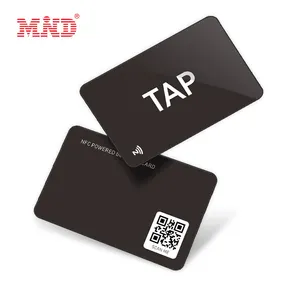Understanding NFC Tags
NFC tags, or Near Field Communication tags, are small devices embedded with microchips that enable wireless communication with compatible devices. This advanced technology allows for a variety of applications in both consumer and business realms. From marketing to payment solutions, NFC tags act as a bridge, facilitating seamless interactions instantaneously.
As wireless technology continues to evolve, NFC tags offer a convenient and efficient way to transfer data without the need for physical connections. Let's dive deeper into their types, features, applications, and advantages to understand their significance in today’s digital age.
Types of NFC Tags
NFC tags come in several varieties, each designed to cater to different specific needs and functionalities:
- NFC Type 1 Tags: These are basic read/write tags, suitable for simple applications that require minimal security and fast data transfer times.
- NFC Type 2 Tags: Commonly used for promotional products, these tags can hold more data and have a longer reading distance compared to Type 1.
- NFC Type 3 Tags: Equipped with superior memory capacity, these tags excel in applications needing enhanced performance and data management.
- NFC Type 4 Tags: Ideal for applications that require high security, Type 4 tags support more advanced features and larger data storage.
- NFC Type 5 Tags: As the latest addition, these tags feature superior data transfer speed and memory, making them suitable for various high-tech applications.
Applications of NFC Tags
NFC tags are transforming how businesses and consumers interact, providing numerous application opportunities across various sectors:
- Retail and Marketing: Retailers use NFC tags for marketing campaigns, letting customers tap their devices on products to access promotions or detailed information.
- Contactless Payment: Many payment systems utilize NFC tags, allowing users to make quick and secure transactions with just a tap of their mobile device.
- Smart Homes: In smart home automation, NFC tags can control devices, allowing users to execute multiple commands with a single tap.
- Access Control: Used in security systems, NFC tags provide a convenient method for managing access to restricted areas or resources.
- Event Management: These tags can streamline check-ins and enhance attendee management, reducing wait times and improving overall workflow during events.
Features and Advantages of Using NFC Tags
NFC tags are not just simple data carriers; they come with an array of features and advantages that elevate user experience. Here are some key points to consider:
- Ease of Use: Simply tap your device against the tag, and you're connected. No complicated setups or configurations needed.
- Versatility: NFC tags can hold various types of data, including URLs, contact information, and command triggers for smart devices.
- Cost-Effectiveness: Production costs for NFC tags are relatively low, making them an affordable solution for businesses of all sizes.
- Durability: Many NFC tags are designed to withstand various environments, making them suitable for diverse applications.
- Security Features: Advanced NFC tags come equipped with encryption, ensuring that transmitted data remains secure and protected.
In conclusion, NFC tags have become an indispensable part of modern technology, providing effortless connectivity and a multitude of applications. With their versatility, durability, and cost-effectiveness, they are an excellent choice for businesses looking to enhance their customer engagement and operational efficiency.















































































































































































































